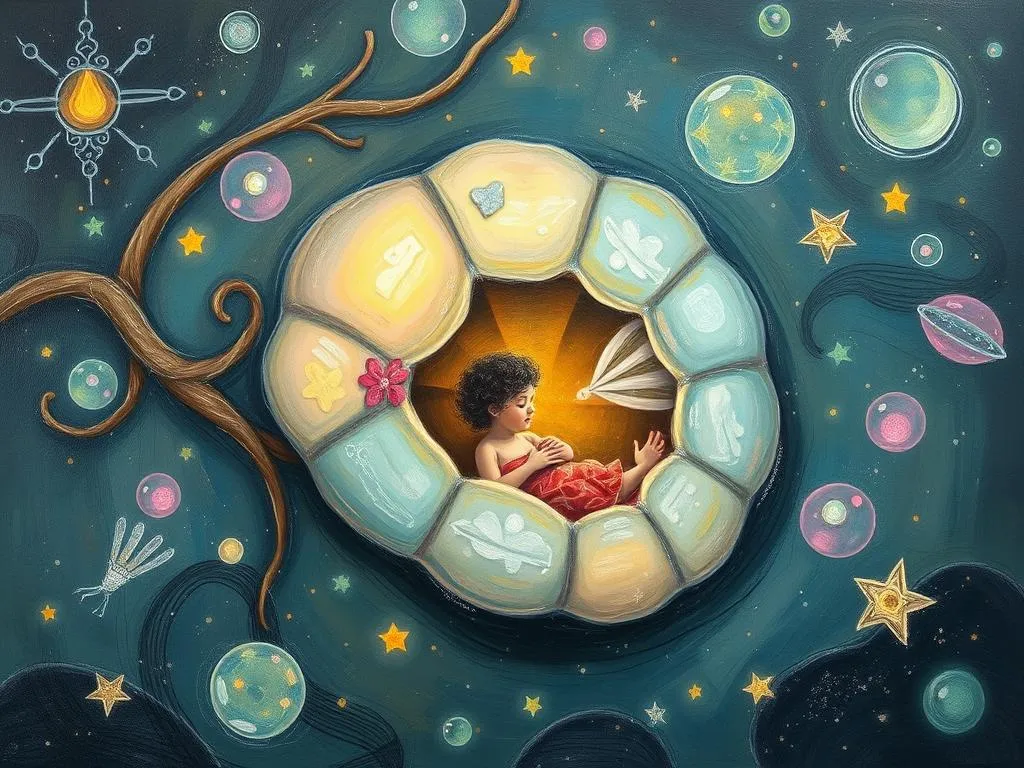
Dreams have long fascinated humanity, serving as a window into our subconscious. Among the myriad forms of dreams, the cocoon dream stands out due to its rich symbolism and profound implications for personal transformation. This dream often resonates deeply, leaving individuals curious about its significance and how it reflects their inner state. The cocoon, a symbol of metamorphosis and protection, invites us to explore themes of change, growth, and self-discovery. As we delve into the meanings and nuances of cocoon dreams, we uncover layers of insight that can lead to personal revelations.
Symbolism and Meaning
At its core, the cocoon symbolizes transformation. In nature, a caterpillar encases itself in a cocoon, undergoing a profound change before emerging as a butterfly. This imagery is a powerful representation of the potential for personal growth and evolution. When we dream of a cocoon, it may indicate that we are in a phase of our life where we are undergoing significant changes, whether emotionally, mentally, or spiritually.
Moreover, the cocoon symbolizes protection. In the dream state, it might reflect a desire to retreat from the outside world or a need for safety while navigating through life’s challenges. This protective aspect can highlight feelings of vulnerability, where the dreamer seeks solace and time to heal.
Additionally, the cocoon can represent the journey of self-discovery. Just as a butterfly must struggle to break free from its cocoon, the dream might suggest that the dreamer is grappling with their own identity and is on the cusp of a personal revelation. This struggle can be uncomfortable, but it is often necessary for growth.
From another perspective, dreaming of a cocoon can evoke feelings of stagnation. If a dreamer feels trapped within a cocoon, it may symbolize a fear of change or an unwillingness to confront the challenges that lie ahead. This interpretation serves as a reminder to examine areas in life where one might feel confined, urging a reassessment of comfort zones.
Key Scenarios and Variations
The meaning of cocoon dreams can vary widely depending on the specific scenarios presented within the dream. Each variation offers a unique lens through which to interpret the underlying messages.
One common scenario involves the dreamer being inside a cocoon. This can evoke feelings of isolation and introspection. If the dreamer feels comfortable and safe, it may indicate a period of necessary withdrawal for personal growth. On the other hand, if the dreamer feels trapped, it could signify anxiety about change or a reluctance to leave a familiar situation.
In another variation, the dreamer might witness a cocoon transforming into a butterfly. This scenario carries strong connotations of hope and renewal. It often suggests that the dreamer is on the verge of a breakthrough, with the potential for positive change on the horizon. Such dreams can inspire confidence in one’s abilities to overcome challenges and embrace new opportunities.
Conversely, dreaming of destroying a cocoon may evoke feelings of regret or loss. This action could symbolize a fear of letting go of the past or an unwillingness to embrace transformation. It invites the dreamer to confront what is being sacrificed for the sake of comfort, urging reflection on what is truly important.
Lastly, a cocoon that is empty may represent feelings of emptiness or a lack of direction. It might indicate that the dreamer has recently gone through a significant change but is now grappling with the aftermath. This scenario can be a prompt for self-reflection, encouraging the dreamer to consider the lessons learned and how to move forward.
Real-Life Connections and Takeaways
Understanding the symbolism of cocoon dreams can empower individuals to connect these dream experiences to their waking lives. The cocoon serves as a metaphor for the various stages of personal growth, prompting reflections on one’s own journey.
For those experiencing a cocoon dream, it may be valuable to consider the current state of their life. Are there areas where they feel stuck or confined? This dream could be a call to action, urging them to break free from self-imposed limitations. Engaging in activities that promote personal growth—such as journaling, therapy, or meditation—can provide clarity and facilitate transformation.
Moreover, the cocoon dream may serve as a reminder to embrace vulnerability. Just as the caterpillar must trust the process of metamorphosis, individuals are encouraged to lean into their insecurities and uncertainties. This can foster resilience and encourage a deeper connection with oneself.
If the dream evokes feelings of isolation or withdrawal, it may be beneficial to evaluate social connections. Are there relationships that need nurturing, or are there toxic influences that require distancing? This dream can prompt a reassessment of one’s support system, encouraging healthier interactions.
Finally, the cocoon dream can inspire individuals to reflect on their aspirations. What does the dreamer wish to achieve? What steps can they take to align their actions with their goals? This dream serves as an invitation to visualize the future and take actionable steps toward personal evolution.
In conclusion, cocoon dreams are rich with symbolism and meaning, inviting introspection and personal growth. By exploring the various interpretations and scenarios, individuals can gain insights into their own lives and the transformative processes they are undergoing. Ultimately, these dreams serve as a reminder that, like the caterpillar, we all have the potential to emerge from our cocoons as something beautiful and new. Embracing this journey can lead to profound self-discovery and fulfillment.







